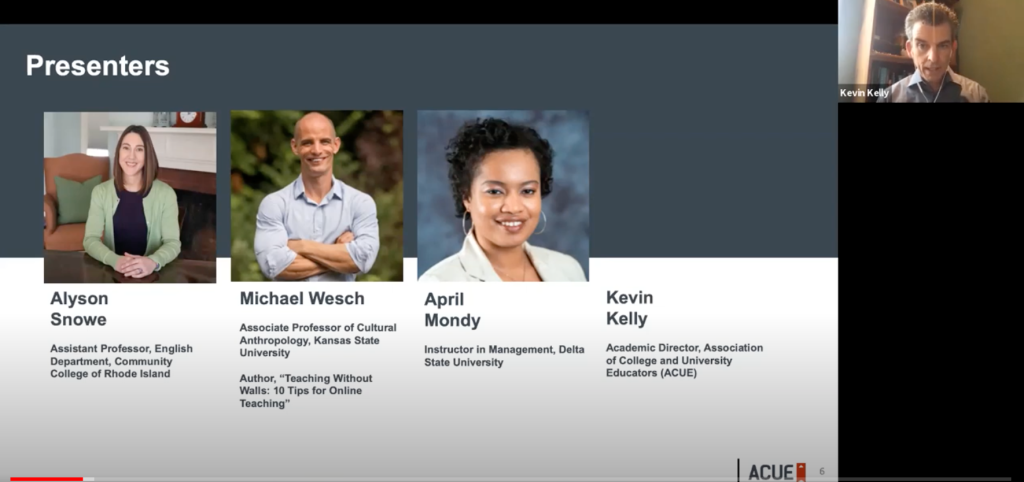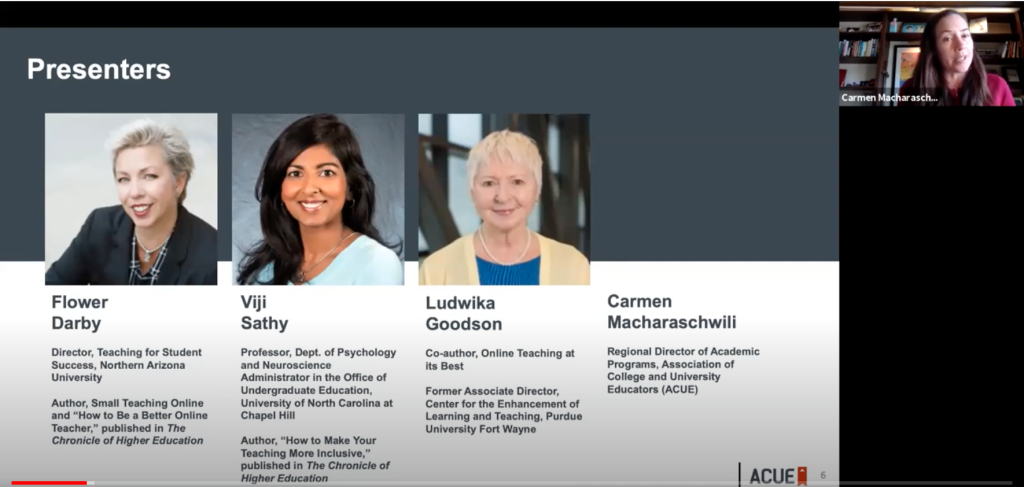
Creating a Culture of Engagement in Your Online Course
“One of our biggest challenges is curating the online learning space in such a way that students feel confident that they’re going to be able to access all the resources needed to successfully complete their assignments,” said Alyson Snowe of the Community College of Rhode Island.
Showing a picture of an extremely messy office, she compared it to how students might feel when entering an online learning environment for the first time. “Expecting anyone to navigate our space would be unrealistic.”
The third installment of ACUE’s six-part Effective Online Instruction webinar series, presented in collaboration with the American Council on Education (ACE), the Association of Public & Land-Grant Universities (APLU), the American Association of State Colleges and Universities (AASCU), the Council of Independent Colleges (CIC), and the National Association of System Heads (NASH), focused on Organizing Your Online Course. Snowe, April Mondy of Delta State University, and Michael Wesch of Kansas State University discussed how to plan your courses from a student’s perspective.
Snowe advised instructors to minimize the need for clicking and scrolling. She also reminded participants to establish the learning objectives upfront. “Students should know what they need to do and when and where they need to do it.”
Wesch agreed. “Keep everything clean,” he said. “You have to be thinking about not just organizing your class—you’re really organizing people’s lives.” He also advised faculty to get students away from their computer. “Your class is not online; those are just the instructions.”
That’s why Wesch handwrites and even draws out plans for his course and presents them during his video sessions. He also adds time estimates for assignments next to the pictures and instructions so students can plan ahead.
“Encourage them to do something outside of class,” he added. “Connect with someone. Something that benefits their mental health.”
Mondy reminded faculty of the stakes. “When students get frustrated in an online environment, that impacts their engagement. It also has an impact on their success if we’re unable to organize the class effectively.”
Acknowledging that every class is structured and formatted differently, Mondy advised instructors to organize them “with a sense of direction.” She offered a visual sequencing for organizing courses:
What do I want my students to do first
Where do I want my students to go next
What do I want my students to avoid
What do I want my students to do last
In discussing pitfalls, Wesch shared a digitized paper syllabus that he used early on in his teaching. Students, he said, would have to go find files referenced in the syllabus. Mondy, meanwhile, encouraged instructors to avoid being too “texty and wordy.” She suggested they find different media for sharing content, such as videos and images.
In terms of engagement and “outsmarting” students who might skip over the content to the assignments, Snowe encouraged instructors to “provide students with relevant, meaningful content. Many students are struggling to manage work and families, so I don’t assign anything that doesn’t have great value for students.” From the beginning, she tells students what they’re going to gain from the work.
Mondy even has her settings configured so students aren’t able to access the assignments until they’ve gone through the content.
“From the moment I started teaching online, I knew the bar had been raised tremendously in terms of how engaging my content needed to be,” Wesh agreed. “Create a culture of engagement—don’t just try to trick them.”
For more advice on how to organize your online course and a complete video and transcript of the webinar, visit our Organizing Your Online Course resource page. You can also share your own thoughts and ask the experts your questions.
For faculty looking to delve further into online learning strategies, check out ACUE’s micro-credential courses.


